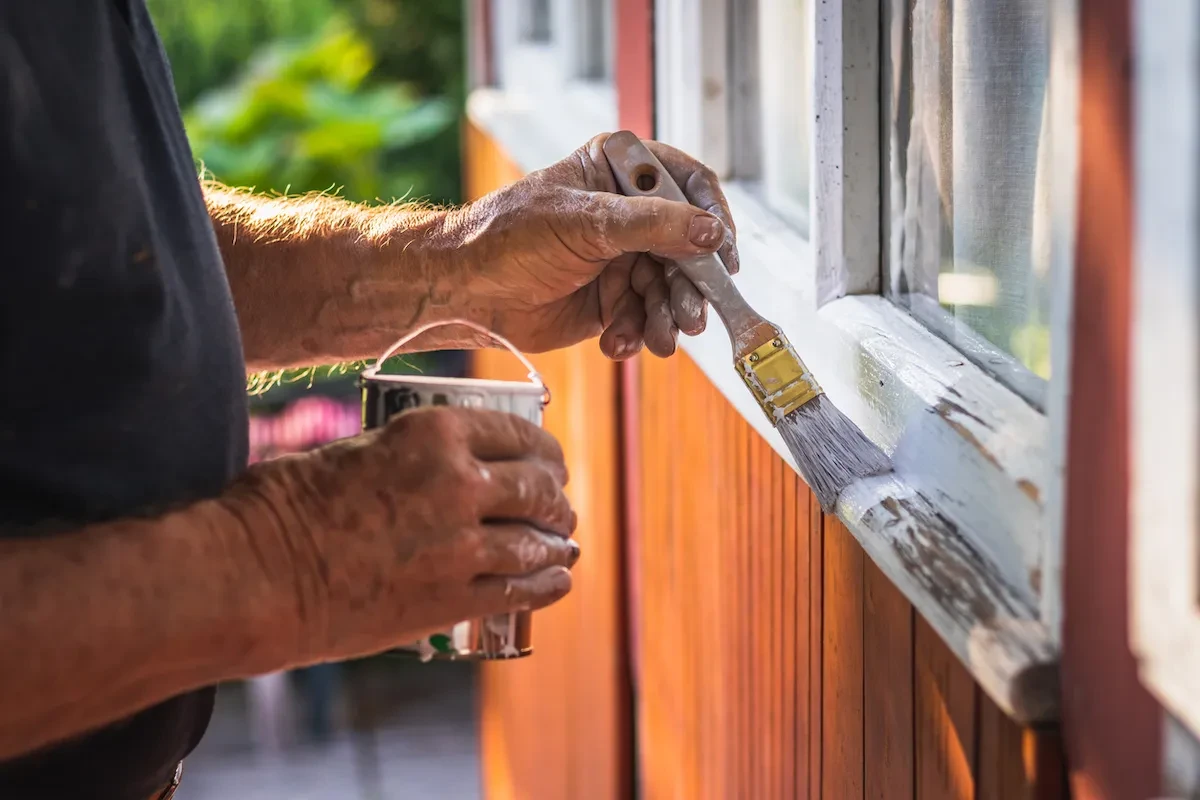Why do doors get painted shut?
Doors often get painted shut due to oversight during home improvement projects. When painters focus on aesthetics, they sometimes need to remember about functionality. Another common reason is layers of paint accumulating over time. Each new coat can stick the door frame and the door together, creating an unintentional bond. Humidity and temperature changes also play a role in this phenomenon. Wood expands and contracts with these fluctuations, which may lead to doors becoming trapped in their frames after being freshened with paint.
In some cases, DIY enthusiasm leads people to skip essential steps like using painter’s tape or caulking around the edges. This negligence can easily seal a door shut without anyone intending it to happen. These causes help prevent future frustrations when dealing with stubborn entrances that refuse to budge.
Preventing future paint mishaps

Preparation is key to avoiding the frustration of a painted-shut door in the future. Before applying paint, use painter’s tape around the edges of doors and windows. This simple step creates a barrier that helps prevent unwanted adhesion. Avoid painting when humidity levels are high or during rainy weather, extending drying times and increasing the chances of sticking.
Regular maintenance also plays a role. Inspect your doors periodically for wear and tear. A little preventive care goes a long way in ensuring functionality. Always choose quality paints designed for trim work. They adhere well but allow easier future adjustments without risking your door’s movement. Staying proactive will save you from unexpected setbacks down the line.
The struggle of a painted-shut door
A painted-shut door can feel like an insurmountable obstacle. You reach for the handle, only to find it stubbornly unyielding. The frustration builds as you tug and pull, but nothing gives way. It’s almost comical, like a scene from a slapstick movie. Yet there’s nothing funny about being trapped behind layers of paint. This situation often catches us off guard when we least expect it.
Every attempt to gain entry becomes a test of patience and ingenuity. Friends might offer advice or laugh at your predicament while sipping coffee nearby. The door stands firm against your efforts, mocking your determination with its silence. It’s just painted, yet somehow, it feels personal, a barrier that equally challenges both body and spirit.
Steps to opening a painted shut door

- Start by assessing the door. Make sure it’s not locked or stuck for another reason.
- Next, gather your tools. You’ll need a utility knife, a flathead screwdriver, and possibly some lubricant like WD-40.
- Carefully insert the utility knife into the seam between the door and frame. This will help cut through any paint and seal them together.
- Once you’ve made an incision, gently wiggle a flathead screwdriver into the gap. Apply slight pressure to pry open the door without causing damage.
- If it doesn’t budge, spray some lubricant around the hinges and seams. Give it time to penetrate before trying again.
Understanding why doors get painted shut
Doors often get painted shut due to a few common mistakes during renovation or maintenance. When homeowners freshen up their spaces, they may need to check if the door is fully closed before applying that final coat of paint. Humidity can also play a role. In damp conditions, doors can swell slightly, making them more prone to sticking. There is also the problem of insufficient drying time between coats. Rushing through the process might leave layers of wet paint that bond with the frame or floor. Sometimes, it’s simply an oversight in busy households where multiple tasks happen simultaneously. A little distraction can turn a simple task into an unexpected problem.
Tools you will need to open a painted shut door
When opening a painted-shut door, having the right tools can make all the difference. You don’t need an extensive toolkit, just a few essentials will do. Start with a utility knife or putty knife. This will help you gently pry apart areas where the paint has sealed the door frame and door together. This task is best accomplished with a thin blade. Pick some lubricant like WD-40 or silicone spray. A quick squirt around hinges may loosen stubborn parts without much effort. A hammer might also be useful if you face stubborn sections that refuse to budge. Use it cautiously to avoid damaging your door further.
Alternative methods for opening a painted-shut door
Sometimes, more than traditional met won’t be needed for you. If you’re feeling adventurous, try using a heat source. A hairdryer can soften the paint along the edges. Move it back and forth slowly to avoid overheating any one spot. Spray some WD-40 or another penetrating oil around the door. It’s where it’s stuck. Let it sit for a few minutes before opening the door again. If these don’t work, consider tapping into your inner handyman with a putty knife or flathead screwdriver. Gently slide it between the door and frame, working around stubborn spots without damaging either surface.




